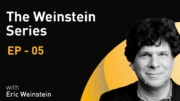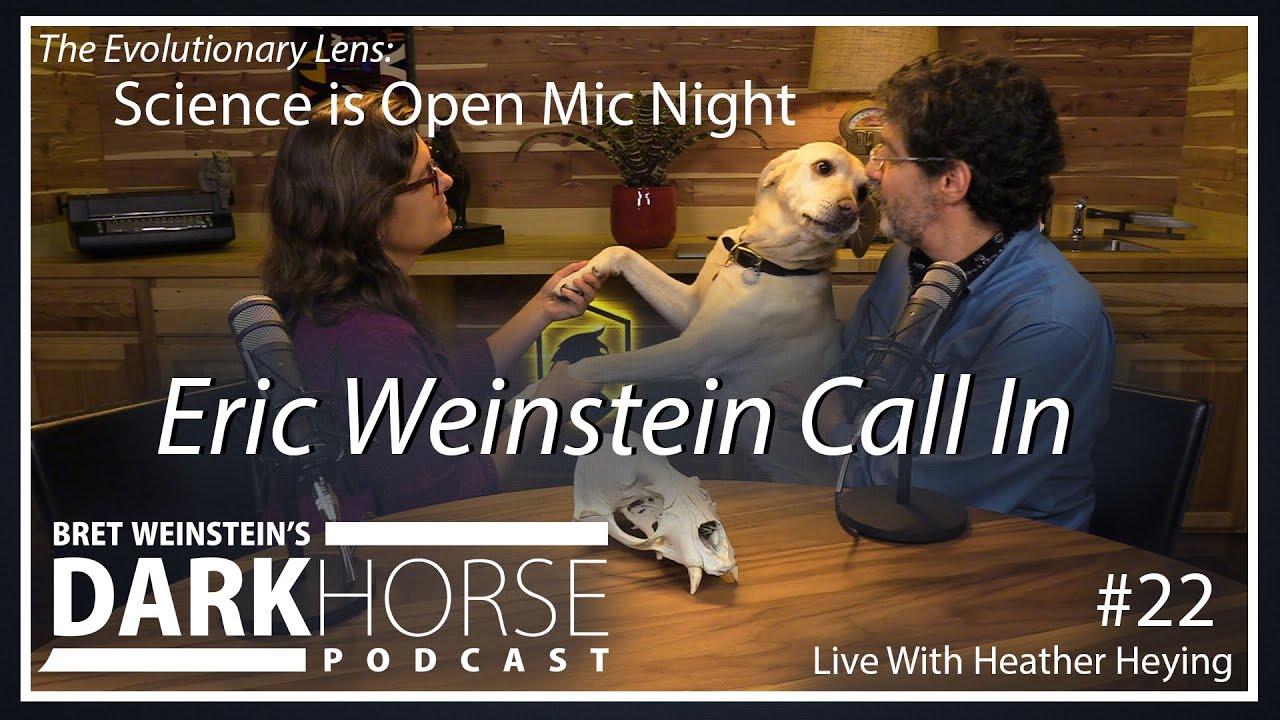
This essay appears in audio format at the beginning of The Portal Podcast, Episode 39.
Hi, it’s Eric with this episode’s audio essay. The subject today is “optics”. I want to try to use this essay to formulate a simple law for social media, but to do so, I would like to put it within a context of other such laws to which it is akin. In the first place, we have a theory within economics stated using only five words, and known as Say’s Law, after Jean-Baptiste Say, which states simply this: “supply creates its own demand“. That is to say, if you have a truckload of some object for which there is demand, say chairs for example, its sale will result in increased demand for other goods from the profits obtained. And thus, Say’s Law links the concepts of aggregate supply and demand, which may have previously been thought by some to be independent. A similar law in the theory of communications was that of Marshall McLuhan, whose famous five word adage, “the medium is the message“, can be interpreted as saying that the vehicle of communications is actually likely to be the principal constituent of the payload it delivers.
While these laws are well known, they are not often connected, despite having a similar flavor. In both cases, they link two concepts which are traditionally considered as connected complements. In this spirit, what I would like to experiment with here is the introduction of a five word law for social media. It may be stated either as “The Optics Are The Substance”, or “Optics Create Their Own Substance”, depending upon whether one wishes to follow McLuhan or Say, respectively.
Now what do I mean by this? Well, consider the effect of a smartphone on human cognition. To be clear, we must acknowledge that such a remarkable device gives us the ability to dive deeply into any subject we care to investigate, but, if we are honest, we must admit that it is even more likely in practice to distract us constantly and dilute our attention than to be the tool that we hope we will utilize for noble means. Thus, we very seldom do dive deeply into any of the subjects which come across our feeds, searches, and screens. And even if we do pursue a news story or update into the weeds, it is very unlikely that large numbers of other users will do so alongside us.
Thus, the most important aspect of a story may well not be its underlying substance or truth, but its optics instead. That is, our intuitive sense of an update may well be expected to be the extent of our engagement with that story. Specific five word specializations of this as-yet unnamed law might be “The Headline Is The Article”, or “The Publisher Is The Politics”. Knowing that an unedited video was leaked to appear on James O’Keefe’s Project Veritas is presumably sufficient to make sure that it is not taken seriously by any center-left institution. The optics of the United States’ cleverly named Black Lives Matter movement are stated clearly in the title. To oppose this organization for its platforms, the self-declared Marxist agenda pushed by its founders, or its bizarre foray into the politics of the Middle East, where there are very few black American lives, is not possible under this law of social media without becoming a racist in the eyes of the internet. Why? Because the optics are in the title, and thus the implied substance of the organization is designed to make it impossible to oppose without catastrophic cost to those reacting to the nuance found in the details.
But what, then, is the new role of what we would have previously considered the substance before the advent of the smartphone and the social internet? Well, this remains a curious question. Let us, for the remainder of this episode, take a radical stance and call this “legacy reality”. You see, in legacy reality, all sorts of things are happening that contradict our new five word law. For example, in legacy reality, a white man named Tony Timpa was killed in Dallas under almost identical circumstances to those in which George Floyd in Minneapolis later lost his life. Timpa was held down on camera for a comparable amount of time: 11+ minutes for Timpa to the 8+ minutes in which Floyd suffered, but he was white, while Floyd was black. Yet there’s bizarrely no concept of Timpa’s death being significant, except in one regard: it shows that we have, as yet, no ability to say which of these deaths is provably racially motivated in the absence of further evidence, and thus, to raise the issue is to question the optics of Floyd’s death.
In short, Floyd’s death was, optically, a lynching. Therefore, in the era of social media, it was in substance a lynching as well by our new law, and the introduction of Timpa’s death is to use legacy reality to question modern substance. Now, the reason I say “modern substance” here is that the implied racism of Floyd’s death as an example of a clear optical lynching was sufficient to propel millions into the streets. And, truth be told, the issue of structural racism and the differential application of policing, trial, sentencing, and incarceration along racial lines has a long and nauseating history from the era of slavery into the present. Thus, the nonsense that powerful Americans have traditionally used to avoid looking directly at the shame of differential treatment within our criminal justice system, particularly for nonviolent drug-related crimes, was matched by the new substance of an optical lynching. Organizers were effectively saying to us, “So what if we don’t know for a certainty that it is a lynching in legacy reality? It was, at a minimum, a much needed optical lynching to galvanize the real change we need, and for which we have waited far too long.”
With that said, the very real changes that are likely to come about as a result of an optical lynching may or may not be for the good, but a sudden injection of unwanted legacy reality is extremely likely to result in buzzkill and the mood spoilage of any movement that is being coordinated not through groupthink, but groupfeel.
So why have optics been so successful in overtaking legacy reality of late? I believe that for a variety of reasons, we’ve changed what would be called the recursion depth were we in computer science here, rather than the politics of civil society. Well, I trust that most of my readers are well aware as adults that an irrational number such as π cannot be computed from a simple fraction. Some of us can still remember the first time we were told that this is not true, and that 22/7 solves the problem. In fact, 22/7 seems equal to π, but only to two decimal places of accuracy, before the two decimal expressions part ways once and for all.
Far fewer of us know that the so-called “perfect fifth” in western music is in fact not perfect at all. It is ever-so-slightly flat and below the pure Pythagorean fifth, producing a ratio of the frequencies of “so” to “do” of approximately 1.4983, rather than 3 to 2, or 1.5.
Now both these examples show us that we can be easily fooled into thinking we understand a situation by not carrying out an investigation beyond a certain limit. In fact, we cannot afford to give infinite attention and resources to investigating every problem. And so, we must cut off our investigations at some point. Sometime between 1971, when Herb Simon started thinking about attention economics, and 2001, when the attention economy concept finally gained enough momentum from Davenport, Beck, and others to propel it into greater mainstream awareness, a huge opportunity was missed. That opportunity was the study of the corresponding market for inattention. For example, in the news media business, many people think that there is always a search for the most eyeballs, yet there also arose a concept called “the Friday news dump”, which sought to find the spot in the week where people would give the least attention for the dissemination of bad news. Likewise, print media writers learn to hide their true underlying stories by “burying the lede”, when the main story had to be told but was not favorable to the paper’s way of thinking. This would sometimes be handled in what is internally called the “to be sure” paragraph, where the author too often effectively confesses the mitigating truths that they had hoped to avoid, at least until the penultimate paragraph many layers deep.
Well, what happens when you can actually calculate where your audience will stop reading, listening, feeling, or thinking? Studies have suggested that just over half of all people spend 15 seconds or less reading an article while digitally grazing.
Likewise, nearly three out of five link sharers have not so much as clicked on the headline that they are passing on. These dispiriting findings for professional writers would be akin within computer programming to finding out that somebody had reset the Python byte-compiler’s recursion limit, which is usually initially set by default to something near a thousand out of the box, to a single digit number.
This, however, creates a fantastic opportunity for those whose ethics are sufficiently flexible. A particular form of our five word law, when applied to news media, would be “the headline generates the story”, or “the headline is the story”. Once this has been discovered, we see that increasingly, the purpose of the article in our era is not to inform, but to minimally support the desired headline for wide dissemination. Other forms of this principle are that, at least in the eyes of the weak and the dim, “the slogan is the platform”, “accusation generates its own conviction”, “the indignation is the refutation”, “swarms generate their own consensus”, “the messenger is the message”, and “the aspiration is the implementation”. This also explains the underlying wisdom of the moronic phrase, “not a good look, bro”. It is often a warning that you are saying something in legacy reality without regard for the optical limits of the situation.
Here, the most important word may well be “bro”, as a corruption or shortening of “brother”, letting you know that you are now in an informal world where barely the first three letters will be read before the word becomes too cumbersome to complete. In an attempt to sum up, then, I will leave you with this:
There is not only a market for your attention, but one for your inattention as well. Your smartphone may well put all the world’s information at your fingertips as is so often remarked upon, but unlike the fabled Library of Alexandria, it puts all the world’s disinformation, misinformation, noise, and distraction as well. And what our CEOs and technologists have learned is that your emotions are responsive to optics and not substance when there are cat and GoPro videos to be watched.
Increasingly, there will be a war on anyone found to be attempting to traffick in higher recursion limits. I recently remarked on Twitter on the situation in Portland, where the nightly battle over the federal courthouse is generating two separate false narratives. In one narrative, increasingly found on the right, the city of Portland, Oregon is sloppily described as burning and constantly at war, which it is not, as the ritualized battle is now confined to a single massive federal building as I write this, into particular hours of the night. In the other narrative, peaceful protesters protected by moms and veterans are being attacked by federal fascists without provocation. Unfortunately for those pushing the latter narrative, any honest review of the videos circulating from citizen journalists will quickly dispel the illusion that a non-political mainstream media is dispassionately reporting all the news that is fit to print. What actually seems to be going on, which I have worked out with my brother who has first hand knowledge of the situation on the ground in Portland, is that each side is trying to get attacked above a certain level before responding. That sounds crazy, of course, but the value going into the election is to generate video that optically moves the needle. As crazy as that sounds, the fatality count is so far thankfully absurdly low in the Pacific Northwest given the violence, because both the rioters, as opposed to the protesters, and the federal agents, seem to be competing to be attacked.
After all, it bizarrely appears that there is nothing more powerful in this media era than being a victim. Everything is reversed. And, in a presidential election year with the country in turmoil, the rule of the land is victim takes all. So what did I say on Twitter that is worth discussing? That the behavior and absence of a cognitively declining Joe Biden from the national scene, and the extreme nature of the radicalized left, seems to be creating a collection of people that I never thought that I would see: the never-Trump Trump voter. It seems that almost every day, people write to me and tell me that they voted for Hillary and/or Bernie, despise Trump, see him as evil, dangerous, and mentally impaired, but now, paradoxically, view him as the last remaining alternative to the party of Mayor Wheeler of Portland and Mayor Jenny of Seattle, currently experimenting with the abolish-law-enforcement movement, which is now both seen and denied everywhere by the Democratic Party and its allied media. I have conversed publicly with such never-Trump Trump voters on my Instagram Live Q&A walks which I’ve been doing under Covid. I’ve even generated a video with Joe Rogan that has been seen by 6.5 million people on YouTube alone, where Joe said that he would vote for anyone over Biden despite having no love of Trump.
Yet, I found myself besieged by thousands of accounts that I had never heard of for daring to insist that this phenomena, that can be easily seen and validated, is in fact seeable. “Name one person who was left of center and would vote for Trump over Biden!”, came the challenge from the swarm. This bewildered me at the time. Then I saw thousands of almost identical tweets with the same weird meme. “Cool story, bro. Did you hear this hanging out in a hipster coffee shop? That totally happened, right?” I must admit I was relieved. This was coordinated, as it turned out, by someone with 13 million followers on Twitter, who ran what was termed a “pod” that coordinated swarming behavior. The fact that all of these tweets could be instantly invalidated was not the point. No one cared about their credibility. The point was that the optics are the substance, and that a swarm is sufficient to generate the optics needed. At some point I saw that the swarm included not just internet trolls, but verified accounts, including one of a Stanford professor.
“A Stanford professor?” I just shook my head. The recursion limit was now set at one on a bright warm day in July, and the clocks were all striking thirteen. But it was alright. Everything was alright. The struggle was finished.








